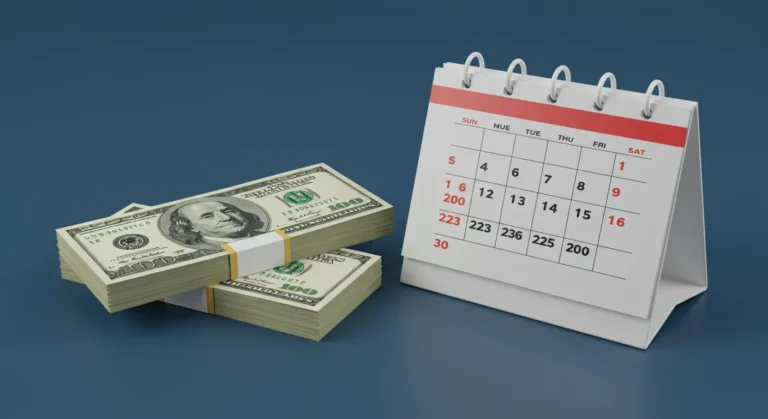Is $1,000 enough for a month? This concern is becoming increasingly relevant as the cost of living continues to rise in many parts of the world. With inflation affecting daily expenses and wages not always keeping pace, budgeting has become more crucial than ever. For many, $1,000 seems like a decent sum, but the real question is: can you realistically make it work? In this article, we’ll dive deep into how far $1,000 can stretch and what factors you need to consider when planning your monthly expenses.
Let’s face it—understanding how to live on a limited budget can be daunting. Whether you’re a recent graduate, someone navigating a job loss, or simply looking to save more, this exploration will arm you with the knowledge needed to assess your spending habits critically. We’ll look into various scenarios that impact financial sustainability and discuss the potential pitfalls of underestimating expenses. By the end, you will have a clearer idea of how to manage on $1,000 for an entire month.
The journey to mastering the art of budget living often begins with a realistic assessment of what $1,000 can cover. Many factors come into play, including geographic location, lifestyle choices, and personal financial obligations. This means that your experience might differ significantly from someone else’s, based on where you live and your individual needs. So, buckle up, and let’s break down this pressing question.
Ready to explore the financial landscape of living on $1,000 a month? Let’s delve deeper into the essentials and some creative budgeting strategies that you can adopt.
Understanding Basic Living Expenses
To determine if $1,000 is adequate for a month, we must first take a look at essential living expenses. These typically include housing, food, transportation, and health costs. Your individual choices and circumstances will greatly influence these amounts.
Housing Costs
Housing often takes the largest chunk of a monthly budget. In urban areas, rent can skyrocket, making it improbable to find a decent place for $1,000. However, if you live in rural communities or opt for shared accommodations, you might manage to keep your rent within budget.
- Urban Areas: Renting a studio might range from $1,200 to $2,500.
- Suburban Living: Shared houses or apartments may cost between $600 and $1,200.
- Rural Locations: You can find decent housing for as low as $400 to $800.
Food Expenses
Food is non-negotiable, but how you approach it can save you significant funds. Cooking at home is generally more economical than eating out. Budgeting around $300 to $400 for groceries can help you create a balanced meal plan.
- Meal Planning: Craft a week-long meal plan to avoid impulse purchases.
- Bulk Buying: Stock up on grains and canned goods for longer shelf-life.
- Discount Stores: Take advantage of Aldi or local farmer’s markets for fresh produce.
Transportation Options and Costs
Transportation plays a pivotal role in your budgeting strategy. Depending on whether you own a vehicle, rely on public transport, or use rideshare services, your costs can fluctuate drastically. For instance, public transportation might set you back $100 to $150 monthly.
A Vehicle vs. Public Transport
Owning a car can mean additional expenses like insurance, gas, and maintenance, which can range from $250 to $400 a month. In contrast, public transport can offer a more cost-effective solution. However, you need to factor in the trade-offs of convenience and accessibility.
- Car Ownership: Consider gasoline, insurance, parking fees.
- Public Transit: Check for student or senior discounts that make fares cheaper.
Personal and Discretionary Expenses
After the essentials, you’ll want to account for personal and discretionary expenses, which can quickly erode your budget. These include things like entertainment, dining out, and subscriptions. It may be hard to manage within $1,000, but voluntary cutbacks can make a massive difference.
Cutting Back on Non-Essentials
You might love your Saturday brunch or gym membership, but those extra costs can squeeze you financially. Consider free or low-cost alternatives, such as home workouts or community events.
- Dining Out: Limit it to once a week or find budget-friendly eateries.
- Subscriptions: Cancel or pause services that you rarely use.
- Entertainment: Explore local free events, parks, or library programs.
Creative Approaches to Supplement Your Income
Living on a tight budget often necessitates creative thinking to make ends meet. If you find yourself hovering around the $1,000 mark, consider ways to supplement your income. Freelancing, gig work, or even selling unwanted items can provide that much-needed cushion.
Exploring Side Hustles
From dog walking to freelance writing, there are numerous side hustles that can fit into a busy schedule. Utilize your skills and interests to carve out opportunities for additional income without burning out.
- Freelance Work: Websites like Upwork and Fiverr can help showcase your skills.
- Gig Economy: Uber, DoorDash, or TaskRabbit might offer flexible income options.
- Sell Unused Items: Consider platforms like eBay or Poshmark for extra cash.
Strategizing for Unexpected Expenses
No budget is foolproof, especially when unexpected expenses hit. Think of these as financial bumps in the road, like car repairs or emergency medical bills. Setting aside a small emergency fund, even within your limited budget, can provide you with a safety net.
Building an Emergency Fund
Even if it’s only $20 to $50 a month, contributing a little can help you build a financial buffer. Stacking savings into a separate account ensures you’re prepared for life’s curveballs.
- Start Small: Even small amounts add up over time.
- Automate Savings: Set up automatic transfers to make saving a habit.
- Track Spending: Review your budget regularly to find savings opportunities.
Ultimately, is $1,000 enough for a month? The answer isn’t a straightforward yes or no—it entirely depends on your lifestyle, location, and personal financial management. By understanding your expenses deeply and considering creative budgeting strategies, you can potentially thrive even on a modest monthly income. Take the time to assess, plan, and adapt your financial habits, and you may find that making it work is not only possible but also empowers you to make smart choices for your future.

Useful links
Conclusion
When we think about a budget of $1,000 for a month, it’s easy to get swept up in the numbers. Is it a tight squeeze or a reasonable cushion? The answer often depends on where you live, your lifestyle choices, and how well you manage your resources. It’s crucial to consider your essential expenses, like housing and food, against your income to gauge what you can reasonably afford. You might feel overwhelmed, but with careful planning, that grand might just stretch a bit further than you think!
We’ve all had those months where it feels like the budget is spilling out of our hands, right? It’s not just about the dollar amount; it’s about prioritizing needs versus wants, cutting unnecessary expenses, and being resourceful. If you’re ready to explore options like meal prepping, public transportation, or even side gigs, you’ll find that living on $1,000 can be a rewarding challenge rather than a burden. It’s more than achievable—it’s an opportunity for creative living!
Ultimately, the most important takeaway from this discussion is that a month on $1,000 is subjective. It demands focus on your financial goals and a willingness to adapt. Whether it’s a temporary experiment or a long-term lifestyle, approaching this budget with an open mind can lead to surprising discoveries about yourself and your spending habits. So, if you’re considering whether this budget could work for you, I encourage you to take the plunge and see where it leads—you might just uncover a newfound sense of financial freedom!
Frequently Asked Questions
Is $1,000 enough to live on for a month?
Whether $1,000 is enough for a month really hinges on your location and lifestyle. In many high-cost cities, this might barely cover rent, while in lower-cost areas, it could stretch comfortably for various needs. Consider your essential expenses, such as rent, groceries, and utilities. Make a detailed list of your needs versus wants, and you may find that with astute budgeting and minimized spending, you can indeed live on this amount for a month.
What are the essential expenses I should consider for a monthly budget?
When crafting a budget, prioritize essential expenses such as housing (rent/mortgage), utilities, groceries, transportation, and insurance. Don’t forget about personal care and health-related costs. Allocating a portion of your budget for emergencies is also crucial. Each individual’s needs will differ, so tailoring your budget to your life circumstances ensures you account for both fixed and flexible costs, helping you maximize your $1,000.
Can I live on $1,000 a month if I have kids?
Living on $1,000 a month with children can be exceptionally challenging. Childcare, schooling, and food become significant expenses. While it may be possible in certain regions with low living costs, it’s essential to explore assistance programs, budget-friendly activities, and community resources. Involving kids in budgeting discussions can also teach them financial literacy and empower them to contribute creatively.
Are there resources or programs that can assist if I’m living on a tight budget?
Absolutely! Many community resources exist to help those on tight budgets, such as food banks, low-income housing programs, and local nonprofits. Additionally, some organizations offer financial counseling or workshops on budgeting and saving. Connecting with government assistance programs like SNAP or housing vouchers can also provide relief. These resources can lessen the financial strain and empower you to make your $1,000 stretch further.
What creative strategies can I use to save money while living on a tight budget?
Creativity is key to living on a tight budget! Meal planning, bulk buying, and cooking at home can drastically reduce food costs. Utilize public transportation or walk whenever possible to save on gas. Explore free local events or activities for entertainment instead of pricey outings. Furthermore, consider side gigs or freelancing to supplement your income, turning your budget into an exciting challenge rather than a limitation.
How can I track my spending effectively while on a tight budget?
To track spending effectively, consider using budgeting apps or just simple spreadsheets to categorize your expenses. This helps in identifying where your money is going and in spotting any unnecessary expenses. Establishing weekly check-ins to review spending habits keeps you accountable and allows for adjustments as needed. Transparency is essential, whether you’re budgeting individually or involving family; it fosters discussions about money that can lead to smarter financial decisions.
What should I do if I find that $1,000 is not enough for me?
If you find that $1,000 isn’t sufficient, examine your budget closely to pinpoint areas for improvement. Identifying non-essential expenses to cut or eliminate can free up funds. You might also consider seeking additional income sources, whether through a part-time job or gig economy opportunities. Changes like downsizing your living situation or relocating to a more affordable area could also be significant adjustments leading to a more sustainable budget.


